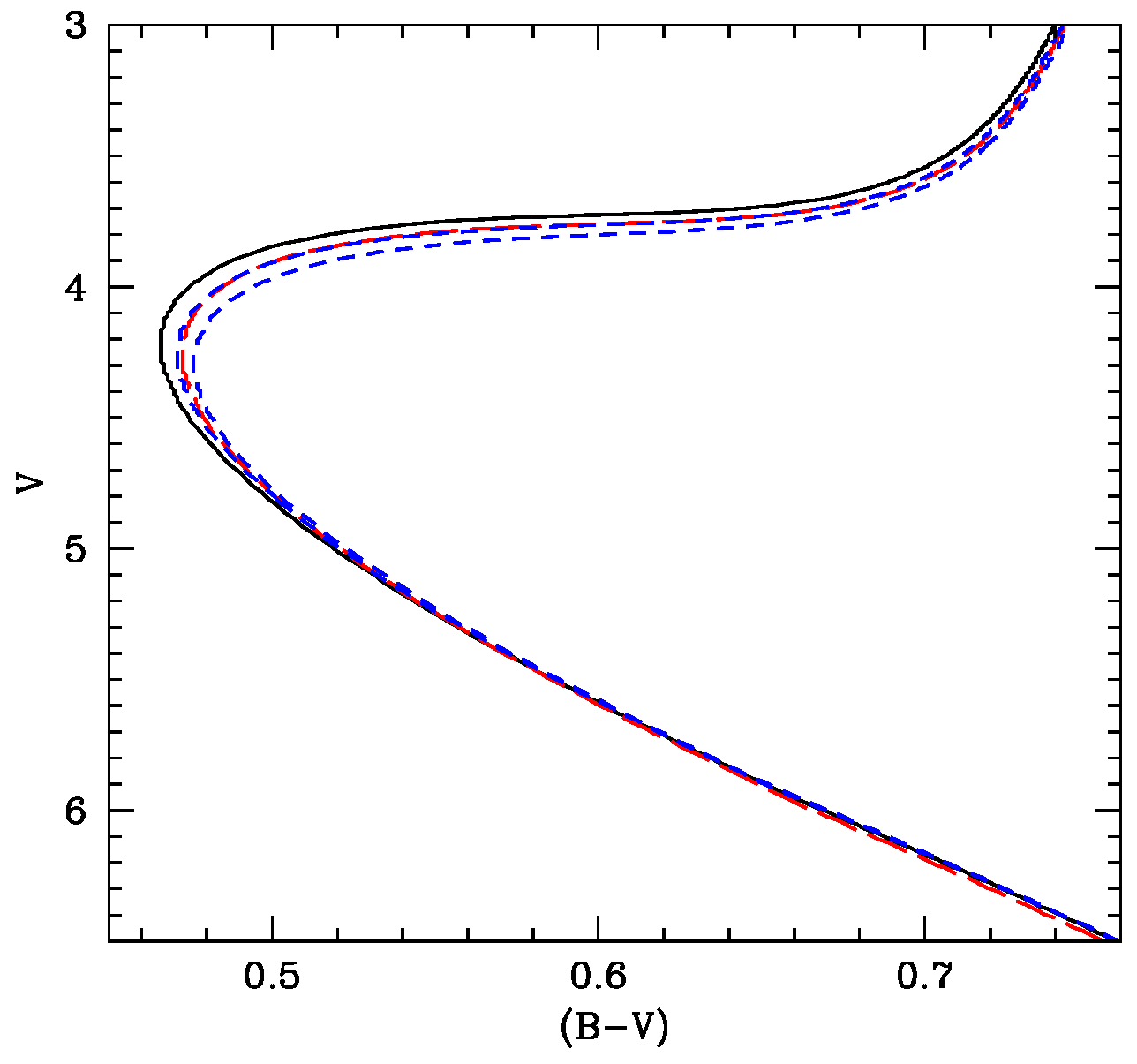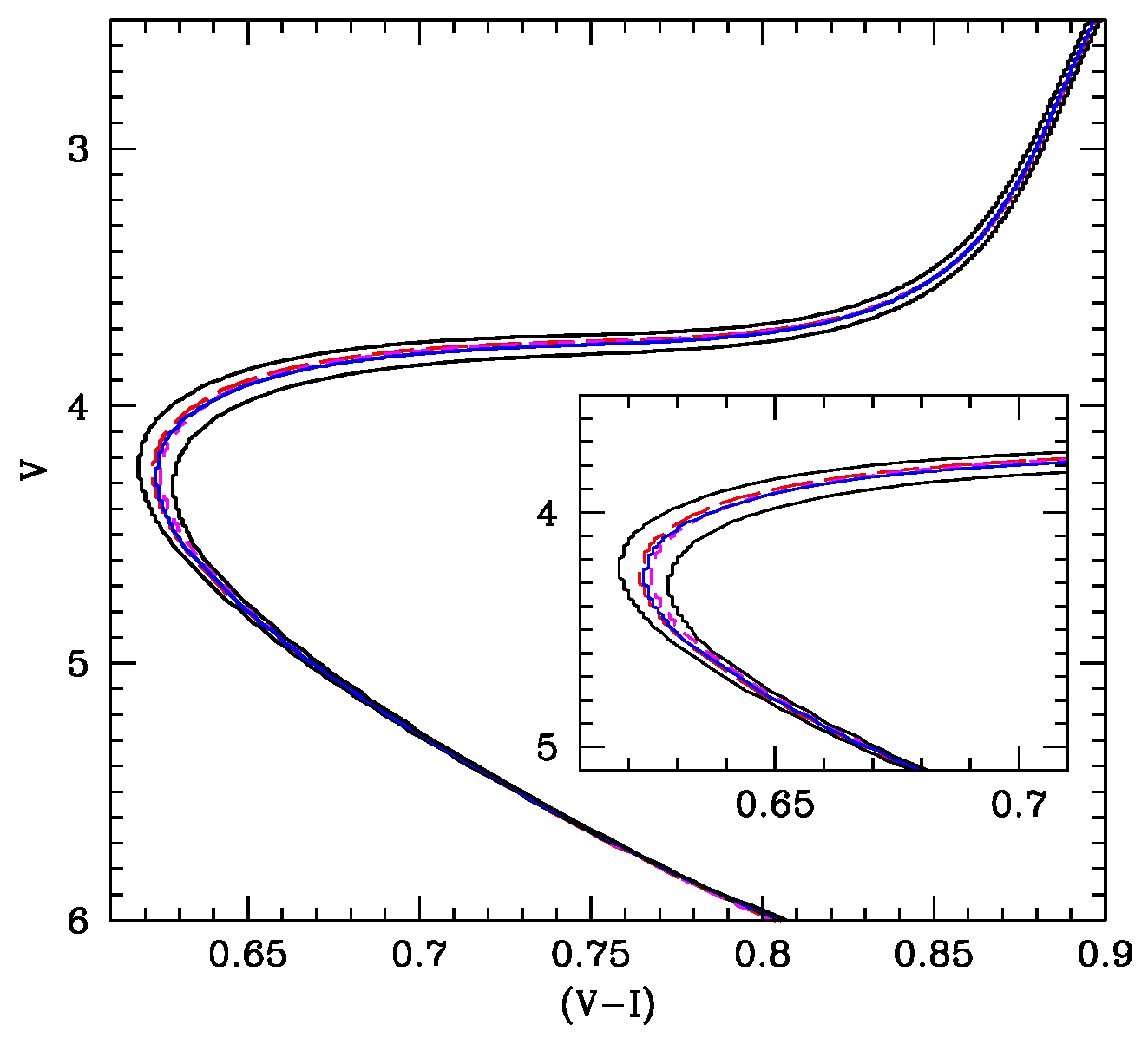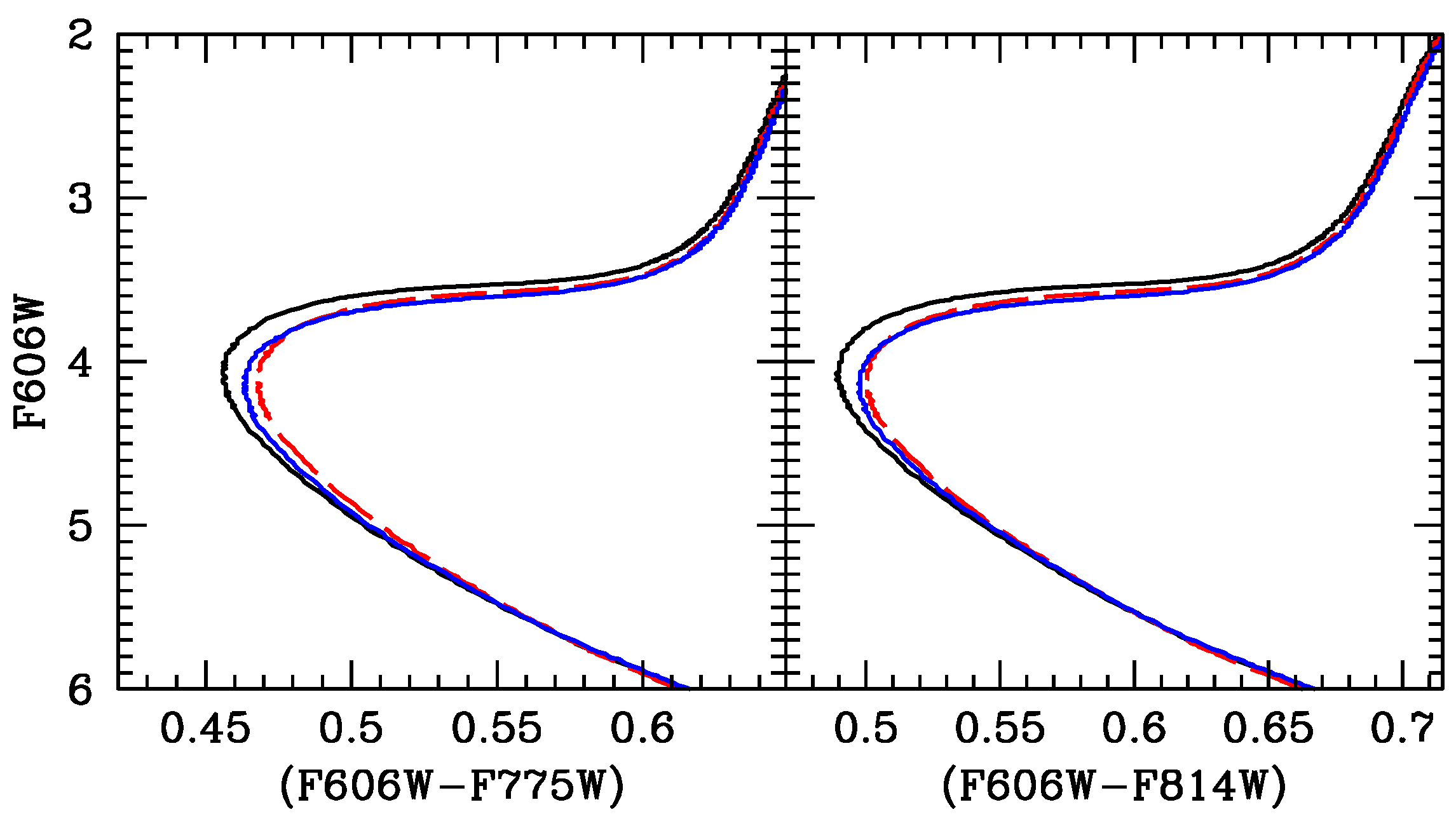Interstellar Reddening Effect on the Age Dating of Population II Stars
Abstract
:1. Introduction
2. Methodological Approach
3. Final Remarks
Author Contributions
Conflicts of Interest
References
- Whitford, A.E. An Extension of the Interstellar Absorption-Curve. Astrophys. J. 1948, 107, 102. [Google Scholar] [CrossRef]
- Whitford, A.E. The law of interstellar reddening. Astron. J. 1958, 63, 201–207. [Google Scholar] [CrossRef]
- Cardelli, J.A.; Clayton, G.C.; Mathis, J.S. The relationship between infrared, optical, and ultraviolet extinction. Astrophys. J. 1989, 345, 245–256. [Google Scholar] [CrossRef]
- Fitzpatrick, E.L. Correcting for the Effects of Interstellar Extinction. Publ. Astron. Soc. Pac. 1999, 111, 63–75. [Google Scholar] [CrossRef]
- Schmidt-Kaler, T. Die Verfärbung als Funktion der interstellaren Absorption und der Energieverteilung des kontinuierlichen Sternspektrums. Astron. Nachr. 1961, 286, 113. [Google Scholar] [CrossRef]
- Grebel, E.K.; Roberts, W.J. Heterochromatic extinction. I. Dependence of interstellar extinction on stellar temperature, surface gravity, and metallicity. Astron. Astrophys. Suppl. Ser. 1995, 109, 293–312. [Google Scholar]
- McCall, M.L. On Determining Extinction from Reddening. Astron. J. 2004, 128, 2144–2169. [Google Scholar] [CrossRef]
- Pickles, A.J. A Stellar Spectral Flux Library: 1150–25000 Å. Publ. Astron. Soc. Pac. 1998, 110, 863–878. [Google Scholar] [CrossRef]
- Girardi, L.; Dalcanton, J.; Williams, B.; de Jong, R.; Gallart, C.; Monelli, M.; Groenewegen, M.A.T.; Holtzman, J.A.; Olsen, K.A.G.; Seth, A.C.; et al. Revised Bolometric Corrections and Interstellar Extinction Coefficients for the ACS and WFPC2 Photometric Systems. Publ. Astron. Soc. Pac. 2008, 120, 583. [Google Scholar] [CrossRef]
- Casagrande, L.; VandenBerg, D.A. Synthetic stellar photometry—I. General considerations and new transformations for broad-band systems. Mon. Not. R. Astron. Soc. 2014, 444, 392–419. [Google Scholar] [CrossRef]
- Pietrinferni, A.; Cassisi, S.; Salaris, M.; Castelli, F. A Large Stellar Evolution Database for Population Synthesis Studies. I. Scaled Solar Models and Isochrones. Astrophys. J. 2004, 612, 168–190. [Google Scholar] [CrossRef]
- Pietrinferni, A.; Cassisi, S.; Salaris, M.; Castelli, F. A Large Stellar Evolution Database for Population Synthesis Studies. II. Stellar Models and Isochrones for an α-enhanced Metal Distribution. Astrophys. J. 2006, 642, 797–812. [Google Scholar] [CrossRef]
- Cassisi, S.; Salaris, M. Old Stellar Populations: How to Study the Fossil Record of Galaxy Formation; John Wiley & Sons: New York, NY, USA, 2013. [Google Scholar]




© 2017 by the authors. Licensee MDPI, Basel, Switzerland. This article is an open access article distributed under the terms and conditions of the Creative Commons Attribution (CC BY) license (http://creativecommons.org/licenses/by/4.0/).
Share and Cite
Ortolani, S.; Cassisi, S.; Salaris, M. Interstellar Reddening Effect on the Age Dating of Population II Stars. Galaxies 2017, 5, 28. https://doi.org/10.3390/galaxies5030028
Ortolani S, Cassisi S, Salaris M. Interstellar Reddening Effect on the Age Dating of Population II Stars. Galaxies. 2017; 5(3):28. https://doi.org/10.3390/galaxies5030028
Chicago/Turabian StyleOrtolani, Sergio, Santi Cassisi, and Maurizio Salaris. 2017. "Interstellar Reddening Effect on the Age Dating of Population II Stars" Galaxies 5, no. 3: 28. https://doi.org/10.3390/galaxies5030028




